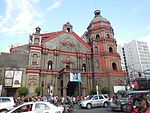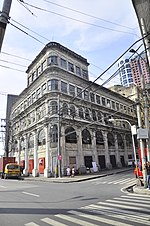Raja Soliman Science and Technology High School
1964 establishments in the PhilippinesEducation in BinondoEducational institutions established in 1964Philippine school stubsScience high schools in Manila ... and 2 more
Use Philippine English from October 2022Use mdy dates from October 2022

The Raja Soliman Science and Technology High School (Filipino: Mataas na Paaralang Pang-Agham at Pangteknolohiya ng Raja Soliman) is a public science and technology high school located at Urbiztondo Street in Binondo, Manila, Philippines, although it is geographically within the jurisdiction of the district of San Nicolas. It is a DepEd-recognized science high school and is one of two public science high schools in the City of Manila: the other being the Manila Science High School. It was recognized as a national science and technology high school under Republic Act No. 8843.
Excerpt from the Wikipedia article Raja Soliman Science and Technology High School (License: CC BY-SA 3.0, Authors, Images).Raja Soliman Science and Technology High School
Urbiztondo Street, Manila San Nicolas (Third District)
Geographical coordinates (GPS) Address External links Nearby Places Show on map
Geographical coordinates (GPS)
| Latitude | Longitude |
|---|---|
| N 14.59769 ° | E 120.97278 ° |
Address
Raja Soliman Science and Technology High School
Urbiztondo Street
1010 Manila, San Nicolas (Third District)
Philippines
Open on Google Maps









